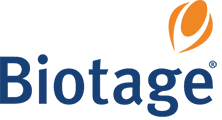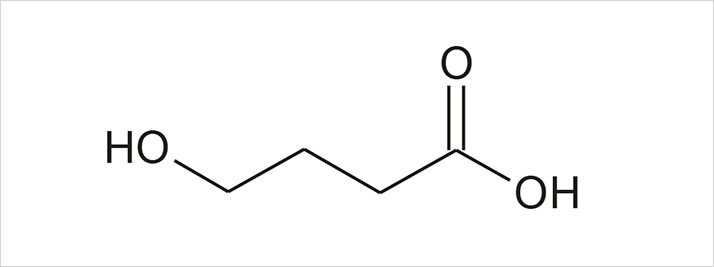Introduction
This application note describes the extraction of GHB from urine using supported liquid extraction and subsequent analysis by GC/MS.
ISOLUTE® SLE+ Supported Liquid Extraction plates and columns offer an efficient alternative to traditional liquidliquid extraction (LLE) for bioanalytical sample preparation, providing high analyte recoveries, no emulsion formation, and significantly reduced sample preparation.

 Figure 1. Structure of gamma-Hydroxybutyric acid (GHB)
Figure 1. Structure of gamma-Hydroxybutyric acid (GHB)Analytes
Gamma-Hydroxybutyric acid (GHB) & GHB-D6
Sample Preparation Procedure
Sample Pre-treatment: Dilute pre-treated urine (0.2 mL) with 0.2% formic acid (aq) (0.2 mL). Spike GHB-D6 internal standard and vortex mix thoroughly. Format: ISOLUTE® SLE+ 200 μL Fixed Well Plate, part number 820-0200-P01 Sample Loading: Load the pre-treated urine (200 μL total volume) onto each well and apply a pulse of vacuum or positive pressure (3–5 seconds) to initiate flow. Allow the sample to absorb for 5 minutes. Analyte Extraction: Apply ethyl acetate (1 mL) and allow to flow under gravity for 5 minutes. Apply vacuum or positive pressure to pull through any remaining extraction solvent (5–10 seconds). Format: ISOLUTE® SLE+ 400 μL Sample Capacity columns, part number 820-0055-B Sample Loading: Load the pre-treated urine (200 μL total volume*) onto the column and apply a pulse of vacuum or positive pressure (3–5 seconds) to initiate flow. Allow the sample to absorb for 5 minutes.
* Note: Column is underloaded Analyte Extraction: Apply ethyl acetate (1 mL) and allow to flow under gravity for 5 minutes. Apply a further aliquot of ethyl acetate (1 mL) and allow to flow for another 5 minutes under gravity. Apply vacuum or positive pressure to pull through any remaining extraction solvent (5–10 seconds). Post Elution, Reconstitution and Derivatisation: Dry the extract in a stream of air or nitrogen at ambient temperature using a SPE Dry (20 to 40 L/min) or TurboVap (1.0 bar) for 30 mins. Upon dryness, reconstitute with ethyl acetate (50 μL) and BSTFA/1% TMCS (50 μL) and vortex for 20 seconds. Transfer to a high recovery glass vial.





